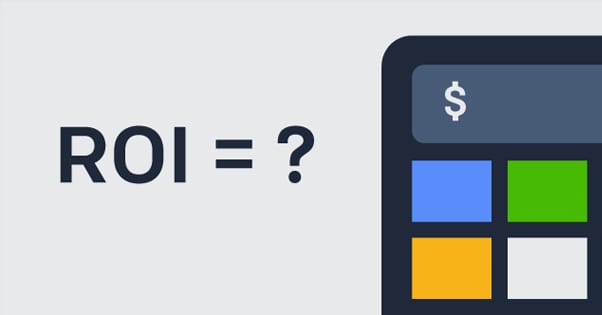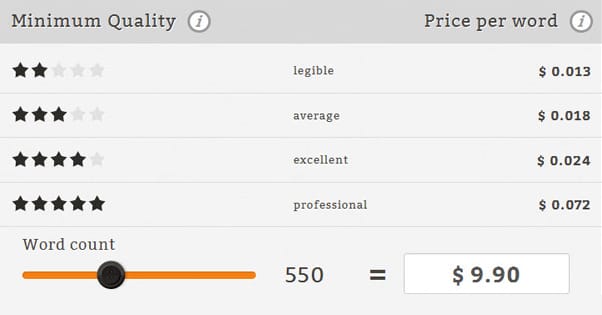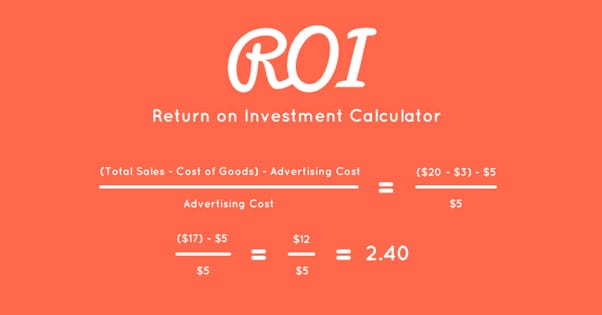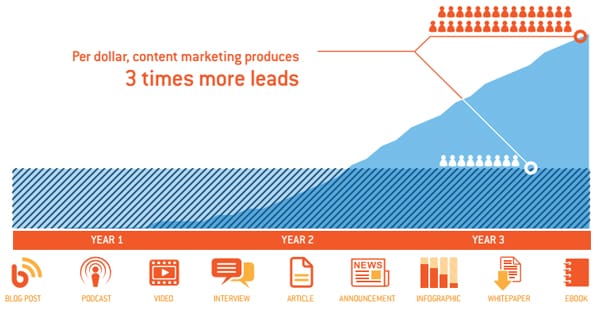Calculating the ROI of Your Blog Content
Published by Drew Hendricks • Content Marketing • Posted March 9, 2016 ContentPowered.com
ContentPowered.com
Blogging and content marketing are the #1 strategy to growing a site today. The problem is, it’s difficult to convince site owners that it’s worth the money. After all, it’s a lot of up-front expense to run a blog, but it has very little in the way of tangible rewards. It’s not like a landing page, where you can use an ad and a landing page to measure the costs and profits coming from the page and ad. There are no easy values you can use to measure your return on investment.
Since ROI is so hard to find, we’re going to have to figure out how to calculate it. Thankfully, it’s possible, you just might need to do a little groundwork first.
Understanding Blog ROI
Traditionally, ROI is the monetary return on a monetary investment you make. If you buy some ads for $10 and they earn you $30 in sales, you earned $20 in profit. You return on investment is that $20, or 200%. The equation is generally the revenue earned from the investment, minus the cost of the investment, all divided by the cost of the investment.
The problem is that this equation falls flat with blogs. You don’t have a fixed investment; it’s an ongoing thing, both with content production and with optimization, marketing, and social posting. You can’t assigned a fixed cost for each blog post, because you also have to consider the costs of promoting those posts, the costs of editing, the costs of web hosting, and more.
At the same time, you also don’t have an easy way to tie a bit of investment – a single blog post for example – to a set of sales. You can’t look at your analytics and see that X blog post led to $Y in sales. It’s not so clear cut. Often, one user will browse numerous posts and might even be a long-time reader for months or years before they actually convert.
There are different ways of calculating a blog’s ROI, though, which you can still implement if you’re impatient and don’t want to consider your blog just one part of a sales funnel, or just a necessary business expense that doesn’t have direct returns.
Forcing the Money
If you’re absolutely determined to create a monetary calculation of your return on investment, you’re going to need to start with expenses.
I like to look at it on a monthly basis.
- What is the direct cost of writing a blog post? If you’re outsourcing your post, this is easy; just record how much you paid for the post, through a ghostwriter or a content mill. If you’re having it written by someone on staff, you have to consider their salary if they’re a full-time writer, or their salary for the amount of time they have to spend on it if they aren’t.
- What less tangible costs go into an employee writing a blog post for you? Are you paying benefits, does it require an investment in technology or resources?
- What costs are associated with running the blog? You have site design fees, web hosting fees, the cost of software you need to host and manage it, etc. Pro-rate these across blog posts.
That’s all a calculation just of the costs of a post. You might be surprised and how “expensive” a single blog post can be, or even just the costs per month. I highly recommend you don’t take this cost to be a true reflection of the price of doing business online, though. Again, this is an inorganic, forced way of calculating ROI. If you try to prune things down based on the cost alone, you’re going to be cutting corners you really don’t need to.
On the other side of the coin, you have the much more difficult calculation of the value of a blog post. What revenue comes from it? Well, that’s difficult to determine.
- Are you running advertising in a PPC or PPM scheme on your blog? If so, you have a nice basic calculation of the revenue you earn per month through it.
- Are you running affiliate advertising through your blog? If so, you have a nice basic calculation of the revenue you earn per month through it. Of course, you don’t necessarily benefit from affiliate advertising when you’re also trying to run a business of your own.
- If you’re not running any directly money-making advertising on your blog, you have to take a look at the various potential revenue-generating actions that can be taken on your blog. This includes lead generation, which might be through clicking on a landing page, filling out a form, sending you an email, or even calling your office through a phone number provided online.
- How many revenue-creating actions are taken per month? How many forms are filled out, how many people subscribe to your mailing list, how many people call you and say they got your number from your website? This is difficult to track, because you have online and offline marketing with many of the same means of contact, and you likely have offline marketing funneling people to your website. It’s a mess to categorize what was spurred on by your blog and what came from other sources.
- What is the value of each individual behavior? This might be the lifetime value of a customer for a subscription service, or the average shopping cart value for a product marketplace. It might also vary from type of action to action. Email subscribers might have a lower average value than people who call your office, for example. You can try to assign a value for each type of action, and measure the number of actions taken in a month. This will give you a rough idea of the revenue that comes in from your blog.
Now you have the two numbers you need to make a monetary ROI calculation. Take your revenue number and subtract the expense number. Then divide the result by the expense number, and you have your ROI percentage. Ideally, this won’t be negative.
You can see, though, how there’s a lot of flexibility in the calculation. What do you consider a blog-related expense versus a business expense in general? What actions do you consider revenue-generating, and what actions aren’t?
The reality is that most of the time, due to the nature of blogging and the internet, things are fuzzy. You might get a bunch of social shares on a post, which lead to more views, which leads to a handful of email subscribers you wouldn’t have gotten otherwise. You might not assign much value to social shares, but they were responsible.
You also have to consider that different blog posts will work differently. Some of them will be much more popular than others. Some will accumulate a lot of email subscribers without very few conversions. Others might have huge conversion rates through phone. You never know how it’s all going to work out.
Another Set of Perspectives
If you choose to look at value in a non-monetary way, you can get some more precise calculations.
Engagement and reach are great metrics to measure as a form of return. How many social shares, comments, links, and views do your posts get? By monitoring these forms of engagement, you get a handle on your audience and can learn what they want out of your site. You can then further tailor your content to increase these metrics, which by extension will increase the derived metrics like subscriptions and purchases.
To add money back into the equation, you can figure out the expense of writing a blog post in much the same way as above. You can then figure out the rough cost of, say, a comment, a social share, or 1,000 website views. As you progress, you should be able to earn more of those metrics for a lower cost each blog post, on average. Remember, posts vary from one to the next, so you want to take averages over a period of time.
You can tailor the layout of your blog to promote different kinds of engagement. If you put social media buttons up top in a prominent position, you’re emphasizing them over comments. If you hide comments below “next post” buttons or related post widgets, you’re further emphasizing other forms of engagement. Conversely, putting comments front and center minimizes other forms of engagement in favor of on-site engagement.
You can also minimize all of those forms of engagement to promote a pop-over or hover lightbox form, like one of those exit intent pops. This can help you promote subscriptions over engagement.
To make a good measurement of subscriptions and leads, you want to do two things. The first is to try to make sure all of your leads come through flagged portions of your funnel. Links should lead to tagged landing pages. Contact forms should specify source. You can even obtain a specific phone number used only on your website, while the number you use in print advertising is difference. It’s easy enough to have more than one number point to the same place.
The second thing you need to do is estimate your sales funnel process. Not only do you need to figure out what steps people take, you need to measure the drop-off on each step. For example, someone might go from your blog to your landing page to your product page to converting. However, each of those steps might drop people off. You might have 1,000 people enter your blog post but only 500 go to your landing page. Of them, only 100 go to your product page, and only 10 convert. That means you need 100 views average for each 1 purchase. The numbers are, of course, completely made up; likely you’ll get fewer than one purchase per thousand views.
Then, of course, you have direct sales. You can measure direct sales that come from blog posts, but only when the user buys in the same session. If they leave and come back another time, they won’t trigger the same recording. You’ll have to compare your sales figures to the number of visitors your blog gets on a daily, weekly, or monthly basis, which will help you calculate how much a visitor is worth. You know the price of what they bought, after all; all you need is the rate at which your users convert to establish a baseline “value” for a visit.
All of these will get you a calculation of the value, to you, of a given type of action. Some actions are more valuable than others, but you’re encouraging them all with your blog. The trick is to get a sufficient number of them in a growth pattern.
Tools to Help
This is all pretty complex to try to calculate from scratch, even just using Google Analytics data to do it.
Thankfully, there are tools out there you can use to assist.
- This ebook produced by Oracle gives you a lot of reasoning for maintaining a blog, even when the investment seems harsh. It also has tips on what to measure and how to measure it.
- This ROI calculator spreadsheet has instructions and formulas embedded in it so all you need to do is find the right data to harvest so you can pull it in and figure out your ROIs for a host of different metrics.
- Tools like Toggl allow you to track the time it takes to perform any sort of action. It’s one of many, many apps designed to track time. Use it for tougher measurements like “time spent writing.”
- This infographic and post which help you calculate the ROI of using social media, which will be inextricably linked to the ROI of your blog, because they fuel each other.
At the end of the day, I don’t find a tangible ROI to be a very important metric for blogging. If you’re blogging properly, your content is going to grow more and more valuable over time. Blog posts, particularly evergreen posts, never stop providing value. Technically, the ROI for your blog goes up every time you create a post, and it goes up every time you implement something to improve your process flow. There are too many variables to make one simple ROI calculation valuable on its own.
Cost per engagement is a better metric, because it helps you know how much you’re spending for one type of engagement or another. It also helps you track how you’re growing and improving with time.










